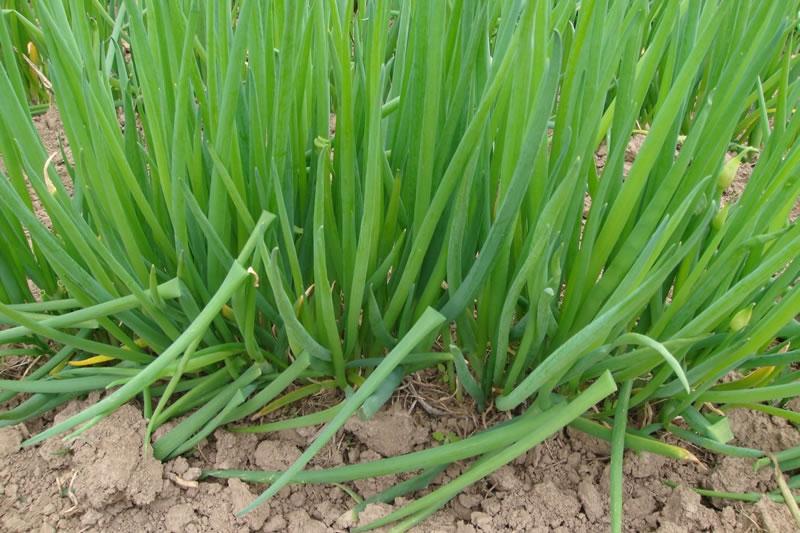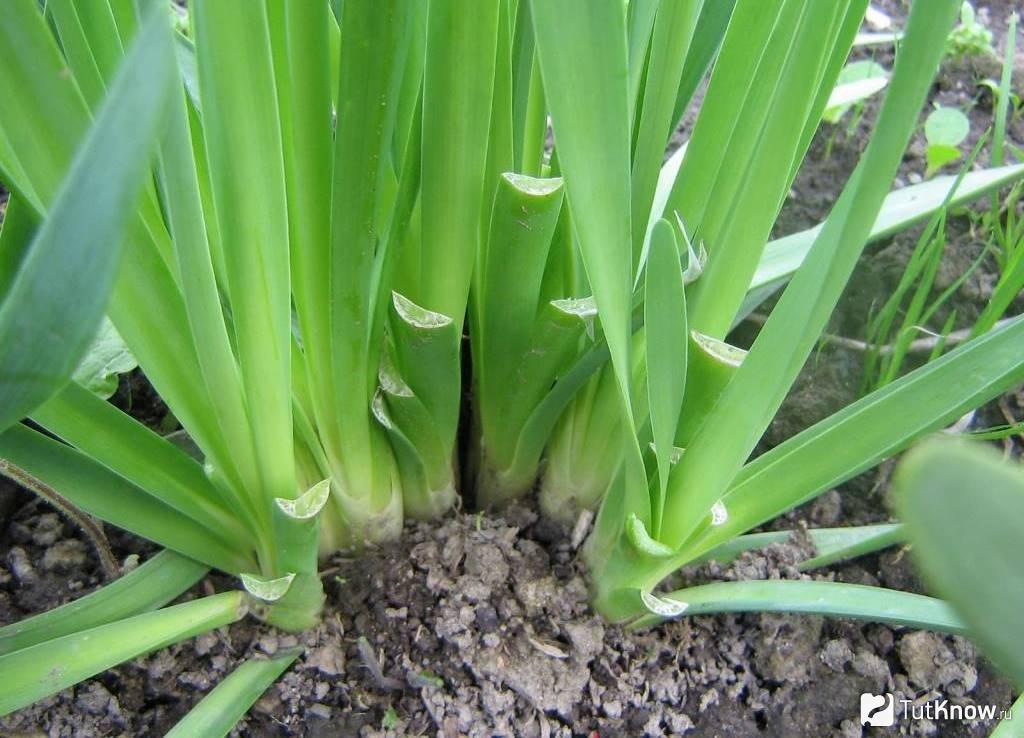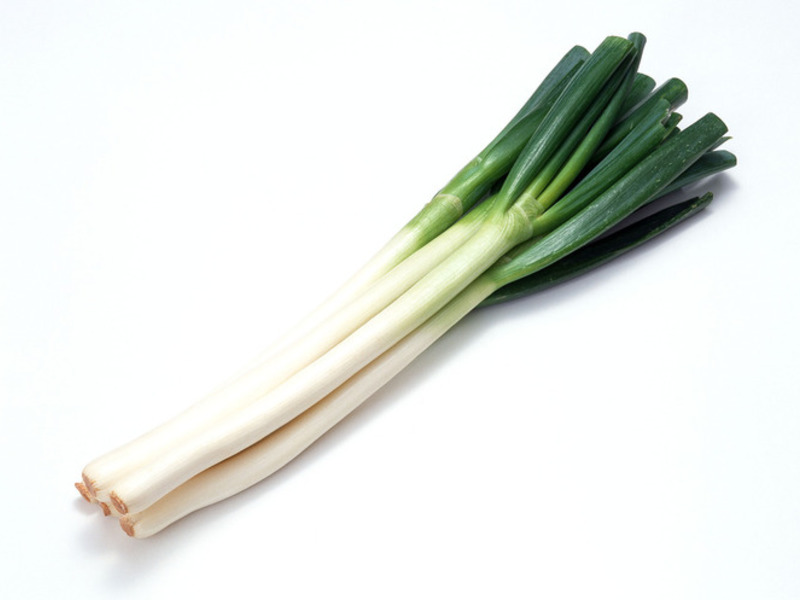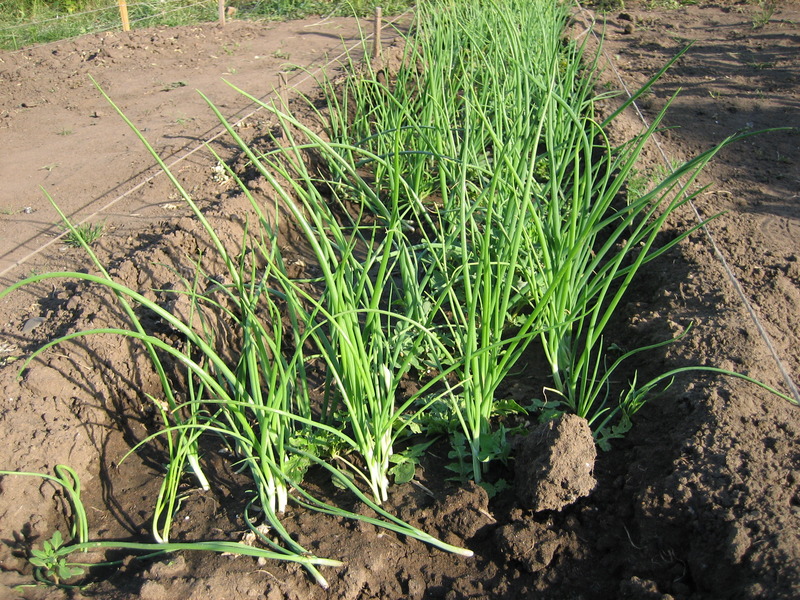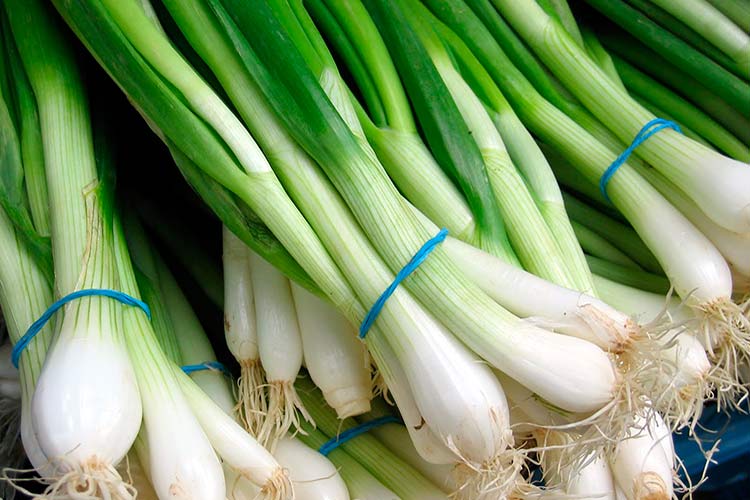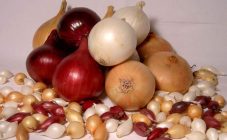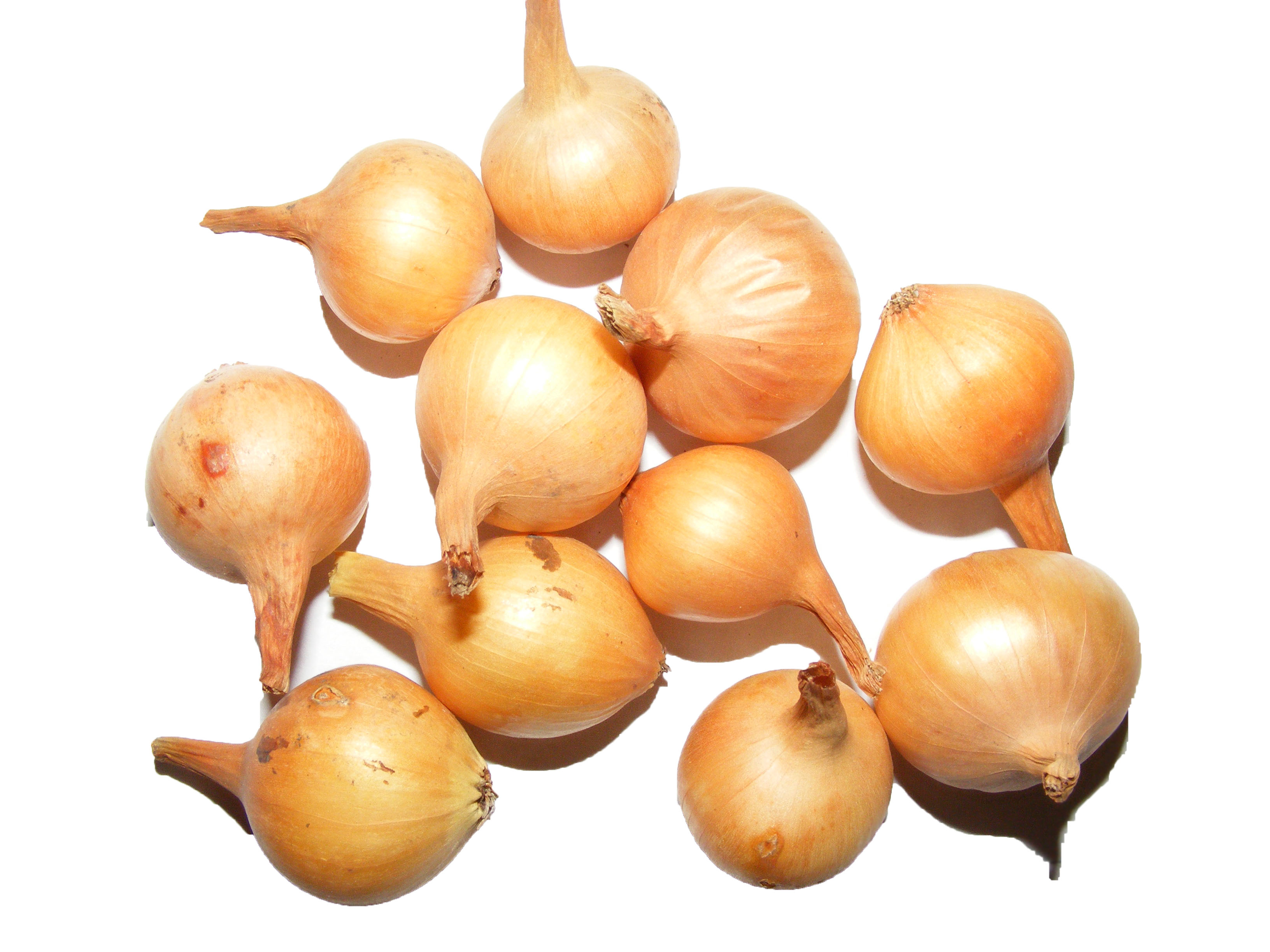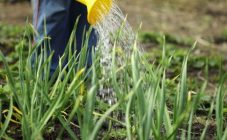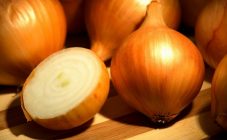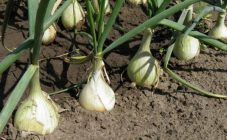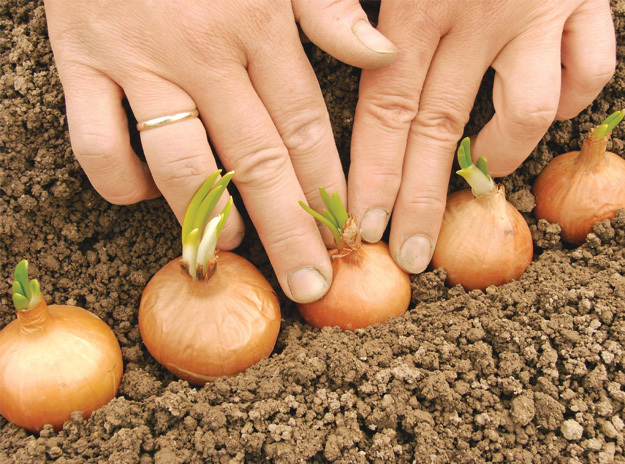Content:
In your own garden you can grow not only ordinary onions. Many people prefer to include special varieties in the diet as a source of vitamins in the summer, which make it possible to consume onions with feathers. You can plant onions with flat wide leaves or thin ones in order to decorate the garden, since the plant visually looks attractive, which allows it to be included in the landscape design of the site.
There are several varieties of green onions, so before planting, you need to carefully study the varieties, to understand which ones meet your needs. This group of plants is perennial - you will not need to plant new ones every season. It should also be borne in mind that the ripening period is early - you can include feathers in the diet from March 15-20. Also, all varieties tolerate low temperatures well, most are resistant to diseases and pests.
The peculiarity that the perennial onion possesses is that it is not capricious, does not require special or constant care. There are also varieties that are capable of flowering, which increases their aesthetic appeal. It is recommended to plant a plant to increase the efficiency of pollination - this will increase the yield of other crops that are on the site.
Features of varieties
Different types of green onions require attention and consideration. There are several popular varieties that are grown in 80% of cases in vegetable gardens.
Slime
This onion with flat and green feathers, the name of which indicates a relationship with the common onion, is popular, as it shows resistance to severe frosts. Refers to perennials - 5-6 seasons can grow in one place after disembarkation. The slime has flat leaves (feathers), which, despite their visual massiveness, are very fragile.
The taste is pleasant, there is no pronounced onion pungency. After cutting, the taste lasts for a long time. Recommended to be eaten before the arrows appear. The root system is located at a depth of up to 20 cm. This variety loves moisture very much, therefore it will require frequent watering. It does not have special requirements for light, therefore it can be planted in a shady area. There are features such as:
- new leaves appear constantly;
- planting in mid-summer, collection in mid-April.
Schnitt
This variety is actively planted in vegetable gardens. Its leaf is visually thinner, narrower, but strong - it is difficult to break it. Cut feathers do not scatter in the hands, which makes it possible to form neat bunches.
It tolerates transportation well. Frost resistance is very good - the leaves begin to form even under the snow. A plant can grow in one place without transplanting for up to 3 years, after which the yield decreases, and the onion needs to be transplanted. A feature of the variety is the ability to grow onions for greens in winter.
In the autumn, you need to dig out the rhizomes, then during the winter they can be grown in pots. Before planting, you need to keep them in a room with a temperature not higher than +10 degrees (balcony or basement). After planting, the first leaves appear after 3 weeks.
Feature - one plant is capable of producing a crop 2-3 times.Schnitt is also used as an ornamental plant, so it can be grown at home, and not outdoors. This perennial is capable of flowering. Shades: red, pink, purple. The buds are represented by arrows with ball-shaped umbrellas at the top.
Multi-tiered
It is also called the walking onion variety. Seedlings appear among the first, even if several species of this plant grow in the garden. In the first year after planting, the type of leaf blade differs from that which will be in the future - the leaves are hollow, fistulous. In the second year, the flower arrow is formed. As a result, several tiers are formed - 2-5 pieces. Each bulbous row is represented by several small formations. The first tier is formed at a height of 0.5-0.8 meters. As soon as they appeared, leaves immediately begin to develop. Their average length is 12 cm.
Reproduction of onions also occurs after the bulbs fall to the ground under their own weight. This onion is early, with initially wide leaves of a dark green color, has a delicate aroma, soft taste, no bitterness. Feature - a young onion feather is used as greens, onions can be boiled and fried, pickled, added to preparations for other vegetables.
Shalotte
Many people use shallots for feathers, they are perennial, capable of growing in one place without transplanting for 2-3 years. The leaves are quite juicy, the taste is good. A rich greenish color looks good on a plate, so shallot is actively used as a decoration for salads. Good winter hardiness, high yield.
Batun
If you want a thin and compact onion, then this variety will not be suitable for planting. It is grown in 70% of cases, as its large and juicy dark green leaves have a rich aroma and a sharp pronounced taste reminiscent of garlic. Feathers are used exclusively for food. A complete bulb is missing.
There are several varieties of the variety. Each of them has differences in the following indicators:
- early maturity;
- foliage;
- frost resistance.
A common feature of the class is that leaf growth begins after the snow cover melts. Reproduction is carried out by seeds, as well as by dividing the bush.
If seeds are used, they can be sown in spring, summer or fall. If sowing was carried out in autumn (sub-winter) or in spring, then the harvest is formed at the end of summer.
If the planting was done in the summer, then the harvest is divided into several stages:
- in the fall, several onion feathers appear;
- in the spring, the leaves are fully usable.
The first greens can be obtained in early spring. To do this, if there are autumn plantings, cover them with foil immediately after the snow cover disappears.
When vegetative propagation is used, the plants are planted in the fall or early spring. The rhizome is divided into parts of 2-3 plants. Then you need to trim the roots to 3-4 cm, trim the leaves to 5-8 cm. When planting, you do not need to cover the growing point of the seedlings with earth.
Agrotechnics
In order to get a good harvest, you need to follow simple agrotechnical rules and recommendations. Perennial onions, regardless of the variety, are a plant that does not need constant or specific care. Well-developed bushes of fragrant greenery appear in pre-fertilized soil.The fertile layer should not contain excess acid (indicators should be neutral).
Also, before planting the selected variety, the soil must be freed from weeds (weeded), all rhizomes must be removed from the ground. This must be done so that the plant receives the volume of water and nutrients required for full development and growth. Weeding should be done regularly, but small weeds in small quantities will not harm the plant.
Attention should be paid directly to the selection of a site for planting a plant. In addition to fertilizers that are applied to the soil, in order to make it more fertile, it is necessary to take into account such a factor as the amount of sunlight. Bushes should receive it for development and growth, but they should not be allowed to be under the influence of direct rays for a long period of time.
This is due to the fact that the plant can dry out. It is recommended to give preference to a shady area. Trees and various shrubs will become good neighbors for perennial onions - they will create protection from the sun, and onions will help in pollination.
At the same time, it must be remembered that plants should not impede ventilation - the place where the onion grows needs high-quality ventilation. The peculiarity of the preparatory measures is that the perennial plant will be in the selected area for several seasons without transplanting. After 2-5 years have passed (depending on the variety), it is recommended to transplant the shrub to a new place.
Despite the fact that a bow with thin feathers looks weak, it is resistant to temperature extremes, strong winds, frost. It is for this reason that the species has different planting dates even within the same variety. You can get a feather both in early March and in summer. Perennial onions are planted in spring when the early vegetables ripen. Caring for the plant after planting is standard: watering, weeding, fertilizing and feeding as needed.
If the weather is good, the crop can be harvested 3-4 times per season, so perennials grow in almost every area.
Care feature - after watering, the soil must be loosened. This activity will have a positive effect on root growth and leaf development. Simultaneously with watering, it is recommended to apply mineral fertilizers or top dressing, then all the nutrients will quickly enter the plant. The plantings are weeded as needed, since only large weeds cause damage. The decorative value lies in the fact that a small bush can be placed on a flower bed or a special zone can be formed that will look like a single composition.
Advantages and disadvantages
They like to plant flat green onions or any other varieties of perennials, since they have a number of advantages:
- do not require complex soil preparation;
- easily tolerate frost, low temperatures;
- are able to develop under the snow (the leaves begin their development in the winter, they move to active growth as the thickness of the snow cover decreases);
- benefit the body (a large amount of vitamins);
- consistently high yields;
- show resistance to disease;
- the first harvest can be obtained after the snow cover disappears;
- the taste is pleasant.
Also, the advantages include excellent decorative qualities (especially in flowering varieties). Plants help to improve the quality of pollination of neighboring crops. A thin leaf is able to give a pleasant aroma to the finished dish, therefore this type is actively used in cooking.
Some species that are small in height can be grown at home. The disadvantages include the inability to tolerate prolonged exposure to direct sunlight, the need to maintain a certain distance during planting in order to reduce the likelihood of pests.
Sometimes a crossword puzzle can be suggestive, such as what is the name of a thin and fragrant green onion or a curved Indian bow. In the first case, the answer will be one of the varieties of perennial types of vegetables, in the second - flat (the archer can create it on his own).
Perennial onions provide a pleasant taste, the leaf can be a decoration or part of the product, the juice is used in folk recipes for the treatment of diseases, as it contains a set of essential components and vitamins. There is a detailed description for each variety, so the gardener will be able to choose the best option for himself.
The bow is used as an independent decorative element. It is included in flower beds. Also varieties capable of flowering are grown for visual presentation. The popularity of the plant is associated not only with the fact that the onion grows beautifully, but also with the ease of care and planting.
Land preparation is standard for all crops. It is necessary to dig up the soil, carry out weeding and watering. Then the plant is planted at a distance of 20 cm between rows and 50-70 cm between bushes.
Thus, the benefits of perennial bows lie not only in a beautiful visual arrangement, but also in the fact that no physical effort is required for subsequent care. Weeding is not necessary if the weeds are sparse and small in size.
